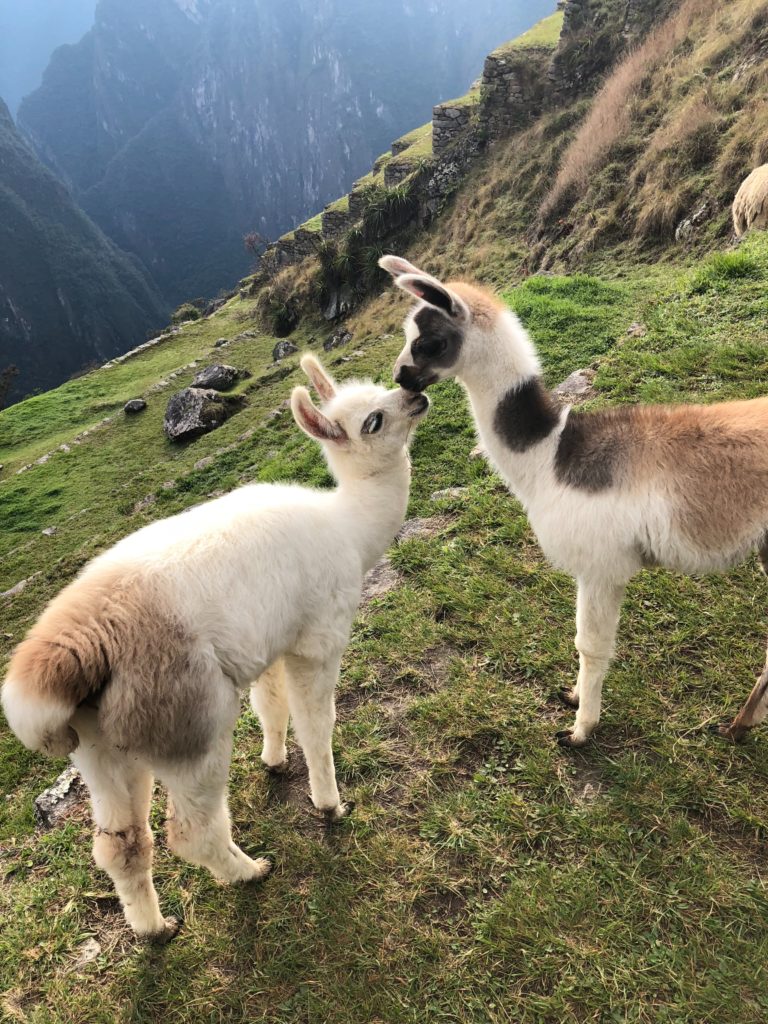First it was pickles, farm-to-table, rooftop beekeeping, and barn weddings with haystack benches. The most recent wave of back-to-the-farm movement involves barnyard animals. Domesticated animals have been around forever, but it seems that suddenly everyone is talking about the joys of barnyard animals that are distinctly NOT about using them for food. Our own Chicken Dreams column chronicles the life lessons from raising a family of seven chickens in the backyard. Here are some of the other ways that barnyard animals are making a comeback.

1. Horse Logging
Industrial logging involves huge machinery to fell and transport trees, but this old-fashioned way of using horses is having a major renaissance in some parts of the country. In horse logging, a logger goes into the forest to pick out the trees to cull. He uses a saw (yes, it’s electric, but no one said he also needed to use an axe) to chop down the tree, and attaches it to horses, who carry away the log. The horses can move in much narrower trails than machinery, which means that they don’t need to clear large swaths of land just to move logs. Their footprints are also much less damaging to the land than huge mechanical skidders. Here are some photos from Fitzmorris Horse Logging in Pennsylvania.
2. Goats for Lawn Mowing / Invasive Species Control
Goats first made headlines this past summer when Amazon Japan hired a flock to trim their lawn. (Each goat even got its own employee badge. Adorable.) Then at the Congressional Cemetery in Washington D.C., 58 goats were hired to chomp down on invasive species, including poison ivy. No pesticides or chemicals, just goats doing their thing.
3. Llamas for Fluffy Companionship
You know something has made it when The New York Times publishes a lifestyle piece on it. Llamas originate from Peru, where they carry packs up the Andes and even guard sheep. In the U.S., though, they are mostly kept as pets. Llama’s fluffy fleece is also used for clothing and blankets, but don’t worry–and since American llama owners dote on their llamas and keep them mostly for llama shows or companionship, you can buy these without worrying about maltreatment of animals or unethical farms.
4. Miniature Horses for Therapy
There are many different breeds of miniature horses, with some internal debate about whether they should have proportions of horses, just made smaller, or they should look closer to ponies with their shorter legs and bigger heads. But all agree that miniature horses are really, really cute. No one can resist smiling when seeing these little guys, and they’re very friendly, hardy, calm, and live longer than regular horses–which makes them really good for therapy work with the sick, the elderly, and children.
These pictures are from Gentle Carousel therapy, a 501 (c) non profit organization. Their team of miniature horses visit hospitals, hospices, even schools (why, to help children learn to read, of course), and their star Magic was named one of AARP and Time’s 10 Most Heroic Animals in History in 2011. The particular incident that brought her the honor was when she visited an assisted living facility. There was a lady who had not spoken one word to anyone during the three years she’d been living there; but as soon as she saw Magic, she said, “Isn’t she beautiful?”, moving the staff to tears. Since then, she has continued to communicate–and Magic is still visiting patients and giving hope.
What we can learn from each of this cases is that there is a way to live harmoniously with domesticated animals. Omnivores often say, “if no one eats meat, then all domesticated animals will be useless and will die/no longer exist,” but this simply isn’t true. Barnyard animals don’t exist solely to provide food–on the contrary, they can change our lives for the better in a myriad peaceful ways. It is only our way of thinking that needs to change.
__
Photo: Unsplash




